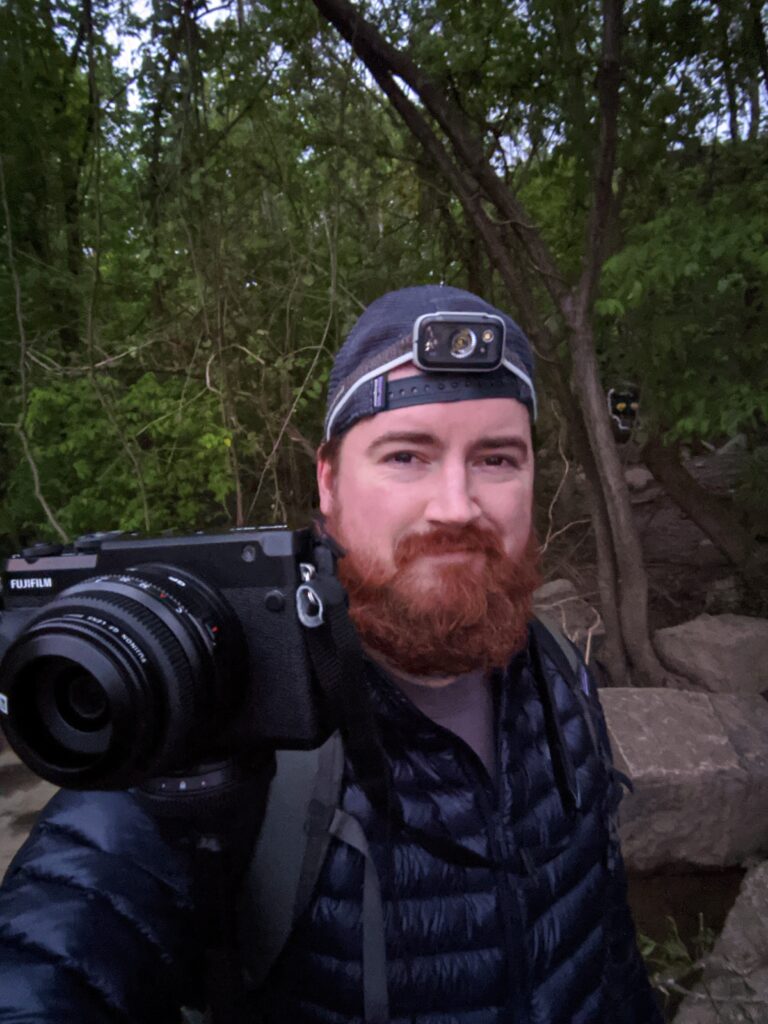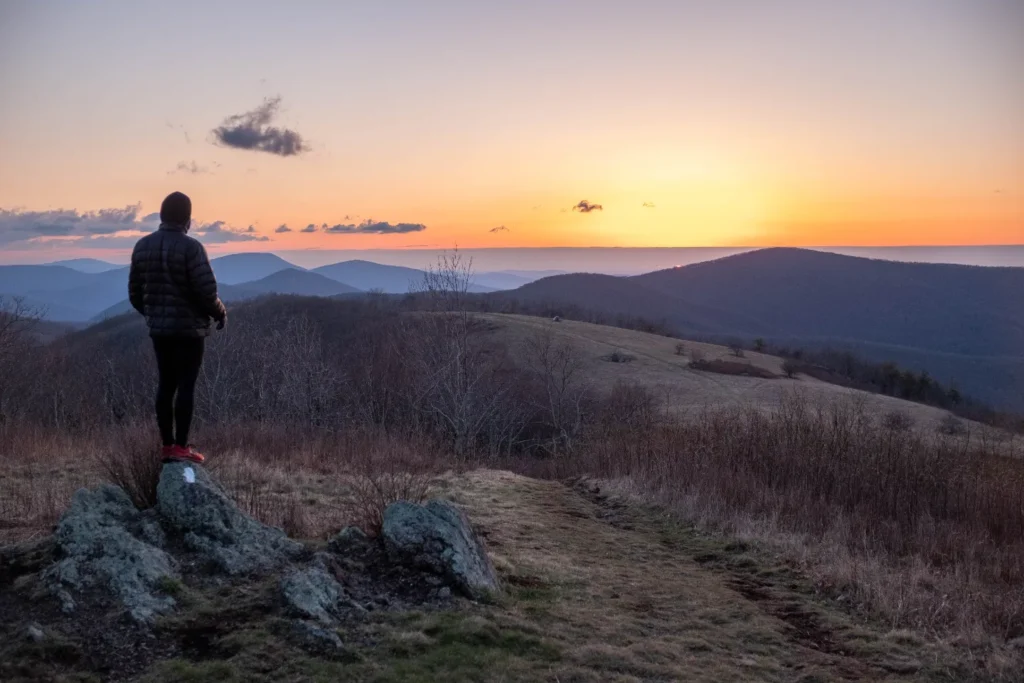If you’re just getting into multi-day hiking, doing sections, or even the full-thru hike of the AT or PCT. Getting where you need to be by a certain time is key and hiking at night becomes a real possibility.
Say you have someone picking you up in town two days out, but with the mileage you’ve been averaging, you aren’t going to make it. Or maybe you take a wrong turn on a trail as the sun is setting and still want to get to that perfect campsite.
You’ll have to put in some trail time in the dark. So here are 7 tips to help you safely hike at night.
1) Always Have A Headlamp
This is a necessity. A must-have. No excuses kind of thing.
I always have a headlamp on while hiking. Even if it’s just supposed to be a day hike. You never know when you’ll need it.
A headlamp will allow you to see the trail in front of you so you can safely hop over rocks, roots, or whatever other obstacles there might be. It’ll also help you stay on the right path, aka not get lost.

Most even have red lights so you see in the dark without messing up your eyes after they’ve adjusted to the dark. I use that setting while reading in my tent or shelter.
Don’t forget spare batteries!
2) Choose Your Trails Carefully
When hiking at night, if possible try to stick to trails you’re already familiar with. Or at least have easy-to-follow markers and directions.
I’ve never hiked on the Pacific Crest Trail personally, but the Appalachian Trail is pretty easy to follow in most parts. The trail only goes North & South and is pretty well marked.
There’s a trail near me in Virginia called Three Ridges, which I could probably do blindfolded I’ve done it so many times, but I feel very comfortable night-hiking there. I’ll often get there after work on a Friday at 8 or 9 pm, then hike a mile or two in the dark so I can get to my favorite camping spot.
3) Let Someone Know Where You’ll Be Hiking
The city/location, exact trail name, the mileage, and how long you plan on being gone. This is huge if you’re hiking at night, especially if you are alone.
I’ll often text my dad that info, but you can do best friend, partner, family, whatever works best for you. Even if they’re a ways away they’ll be able to pass this information along to the necessary parties should the need arise.
4) Carry Extra Food & Water
This might not be the most applicable to someone doing a thru-hike as they will already have food and water accounted for, but say you are planning on squeezing in a ton of mileage on a day hike or a new trail.
In case you take a wrong turn or it takes you longer to finish than anticipated and you get stuck hiking at night. Those miles will likely take a bit longer than daytime mileage. So it’s best to carry some extra food and water to help keep you going.
Even if it’s just an extra pack of Honey Stringer Chews and a full hydration bag of water when you normally fill it up halfway to save weight.
You never know when that’ll pay off.
5) Wear Or Carry A GPS Locator
In case you do get lost while hiking in the dark, having a GPS locator on your person can help you get located or get the help you need. Hook it on your backpack, or belt, or put it in your pants pockets.
Garmin and SPOT are popular brands in this space. Press a button to call for help. Some even have emergency texting services available.
6) Hike With A Buddy (Or Two)
This is even better than simply telling someone else where you’ll be. Bring that person with you.

They can help with navigating trails or map reading. Or maybe your headlamp batteries die without any spares, your hiking buddy can take point and help you move in the darkness.
7) Go Slow
Go slow and ease into the hike. Let your eyes adjust. Don’t try to rush through.
Take the time to dial in your headlamp and make sure it fits properly. I always wear a baseball cap but will put it backward at night so I can wear my headlamp.
Additional FAQs
What’s A Good Headlamp For Hiking At Night?
The Black Diamond Spot 400 Headlamp is a great compact hiking headlamp. It’s got 400-lumen max output, various brightness levels, and it’s even IPX8: waterproof-tested to operate at least 1.1 meters underwater for 30 minutes. So you’ll be good if you get caught in the rain with it. Petzl’s ACTIK is another good one. I have both and use them interchangeably.
Or go for the BioLite HeadLamp 330, a no-bounce rechargeable headlight with a great fit. This one is popular for being super lightweight and having a very simple, streamlined design.
Buy a few to keep as spares in case you don’t have one in your backpack. I’ve got a few stashed away in key spots, like my car glove box and my everyday backpack.
Is it Dangerous to Hike at Night?
Following the above safety tips will help minimize the dangers of hiking at night. But there will still be an increased risk of it when compared to hiking during the day. Just go slow, be mindful of your step, use a headlight, and know where you’re heading. This will cut down on a lot of potential dangers while hiking at night.
